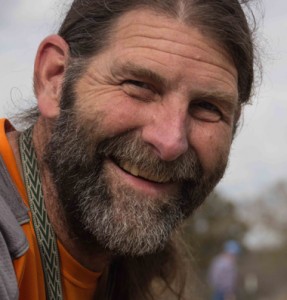Quantitative Structural Geology
The Department of Geological Sciences is the main academic unit of the Jackson School. Founded in 1888, the Department is one of the oldest, largest, and most prestigious geoscience programs in the world. With approximately 50 faculty members, the Department is large and academically diverse. Enrollment is typically about 600 students, which are generally split half and half between undergraduates and graduates. We have more than 4,200 alumni.
Students benefit from opportunities for employment, research support, and academic mentorship working with Jackson School scientists at the Bureau of Economic Geology and the Institute for Geophysics. The Department has strong ties to industry and the Structural Diagenesis Initiative is open to collaborations with other Universities on basic research.
Quantitative Structural Geology Research at The University of Texas
Understanding how natural fracture arrangements and size distributions arise is a basic challenge for structural geology. Information on fracture patterns and sizes–and accurate ways to predict those attributes–are essential to effective subsurface engineering operations under a wide range of circumstances. Our objective is to understand all of the relevant processes at a fundamental level and to do so, quantitative measures of fracture spatial and size scaling attributes are indispensable. Read a retrospective profile
Dr. Randall Marrett leads the quantitative structural geology research program in brittle structure within the Department. Marrett is also a co-PI and founder of the Fracture Research and Application Consortium and the Structural Diagenesis Initiative.
Dr. Marrett’s research concentrates on deformation processes in the upper continental crust where folds, faults, and opening-mode fractures are the most important products. This work is applicable to a wide range of human concerns such as natural hazards (e.g., earthquakes, volcanoes) and the flow of fluids through rock (e.g., hydrocarbons, water, contaminants).
Some common themes that relate his disparate interests are quantitative field observations and analysis, especially using techniques that address spatial and size scaling of structures.
Dr. Marrett currently leads a diverse quantitative structural geology research program that includes field-based research in numerous areas.
Marrett has made important contributions to the literature on the quantification of brittle structures, including
Marrett, R., Gale, J.F.W., Gomez, L., and Laubach, S.E., 2018. Correlation analysis of fracture arrangement in space. Journal of Structural Geology 108, 16-33. doi.org/10.1016/j.jsg.2017.06.012 | view at publisher
Marrett, R. and Almendinger, R.W., 1991, Estimates of strain due to brittle faulting-sampling of fault populations, Journal of Structural Geology, v. 13, no. 6, p. 735-738. As of July, 2014, Web of Science #46 most cited paper in Journal of Structural Geology since inception of the journal
Marrett, R. and Almendinger, R.W., 1990, Kinematic analysis of fault-slip data, Journal of Structural Geology, v. 12, no. 8, p. 973-986. As of July, 2014, Web of Science #18 most cited paper in Journal of Structural Geology since inception of the journal
The following papers reflect some of Marrett’s current research interests:
- A universal power-law scaling exponent for fracture apertures in sandstone. Hooker, J.N., Laubach, S.E., and Marrett, R., 2014, Geological Society of America Bulletin, v. 126, no. 9-10, p. 1340-1362. doi: 10.1130/B30945.1 | view
- Determining brittle extension and shear strain using fault length and displacement systematics: Part I: Theory, Twiss, R. and R. Marrett, 2010, Journal of Structural Geology, v. 32, no. 12, p. 1960-1977. doi:10.1016/j.jsg.2010.04.007
- Determining brittle extension and shear strain using fault length and displacement systematics: Part II: Data evaluation and test of the theory, Twiss, R. and R. Marrett, 2010, Journal of Structural Geology, v. 32, no. 12, p. 1978-1995. doi:10.1016/j.jsg.2010.04.006
- Anisotropy and beyond: geologic perspectives on geophysical prospecting for natural fractures. Marrett, R., Laubach, S.E. Olson, J.E., 2007, The Leading Edge, 26/9, 1106-1111. | Reprinted in Fractured reservoirs: A compendium of influential papers (2008), AAPG.
See the Fault Diagenesis research tab for more information on SDI work on faults.



